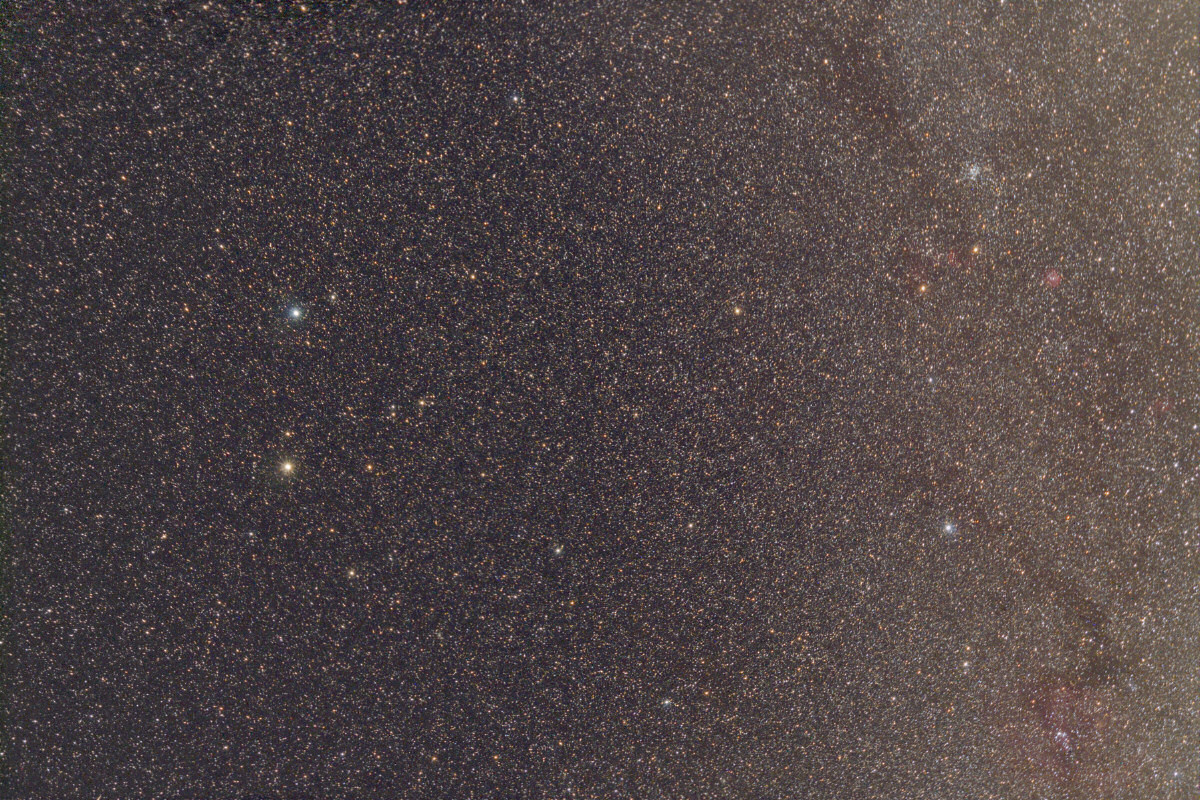
Move your mouse over the image above to get a version with constellation lines, deep-sky objects and labels drawn.
Gemini, the twins, is an easly recognized constellation which can be best observed in winter. It is located between Taurus to the west and Cancer to the east, with Auriga and Lynx to the north and Monoceros and Canis Minor to the south.
The stars of the constellation Gemini can be connected in several alternative patterns, I have chosen the variant which graphically shows a pair of twins holding hands. The twin on top is Castor, whose brightest star is α Geminorum (more commonly called Castor). It is a star of the second magnitude, and represents Castor's head. The twin below is Pollux, whose brightest star is β Geminorum (more commonly called Pollux), a star of the first magnitude which represents Pollux's head.
The "feet" of the twins are located in the Milky Way, which contains numerous clusters and nebulae. The most easily recognized star cluster is M35 at Castor's feet. Another nearby cluster is NGC 2129. The photo also shows a trace of red emission nebula near η Gemini, this is IC 443, a Galactic supernova remnant sometimes called the Jellyfish Nebula. Other nebulae in the Milky Way located just outside the constellation Gemini are NGC 2127 and Sh2-261 in Orion and the Cone Nebula Region around the well-known Christman Tree Cluster NGC 2264 in Monocerus.
 M35 and NGC 2158, refractor photograph.
M35 and NGC 2158, refractor photograph.
 IC 443 - Jellyfish Nebula, Wide Field, Triplet telescope image.
IC 443 - Jellyfish Nebula, Wide Field, Triplet telescope image.
 NGC 2264 - Cone Nebula Region, Wright-Newtonian photograph.
NGC 2264 - Cone Nebula Region, Wright-Newtonian photograph.
Exposure Data